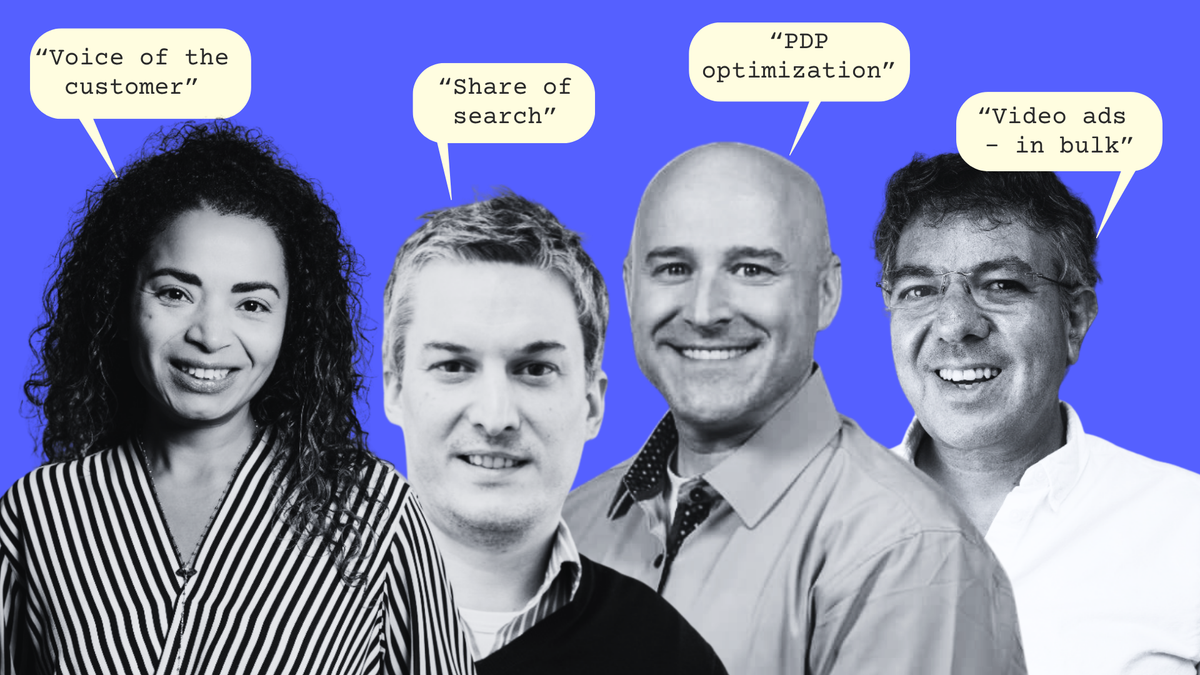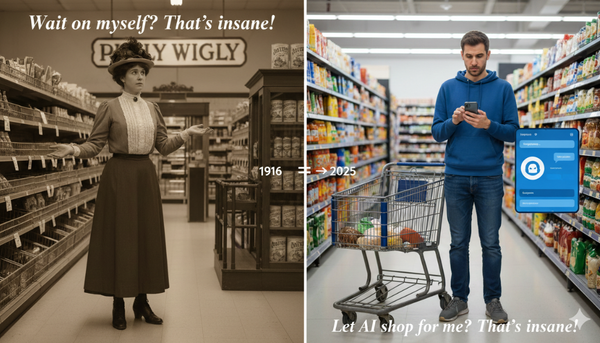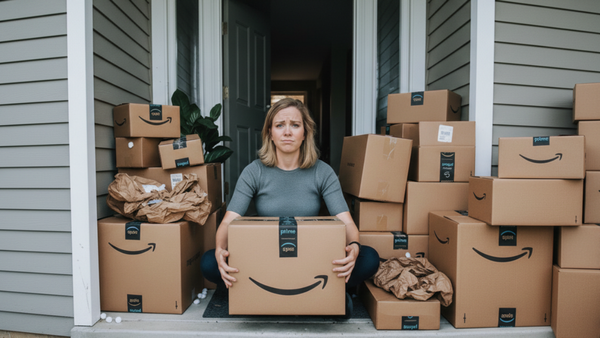How These 4 Retail Media Leaders Are Using AI Right Now
These examples prove that real problems can be solved with the right tools.

Every software vendor seems to have slapped "AI-powered" on their feature list lately, and let's be honest—some of those claims are a bit generous.
The brands I speak with want to know the practical ways that their peers are leveraging AI. Good news – four brand-side ecomm leaders shared examples with me that prove that real problems can be solved with the right tools.
We're talking about AI that analyzes thousands of customer reviews to boost conversions by up to 74%, tools that track your brand's share of search against competitors in real-time, and even AI that automatically optimizes your campaigns to hit specific ROAS targets.
Let's jump in!
Real-Time Share Of Search Monitoring
Simon Swan, Director of Digital Marketing and Media at Karo Healthcare, has found a solution to one of retail media's most persistent challenges: measuring brand performance during campaigns rather than waiting months for results.
"A tool we are using around AI which is new to the business that we've integrated this year is called My Telescope. It's a share of search tool as a measurement substitute for share of market," Simon says.
The platform uses AI to measure brand share of search versus competitors across Google, Amazon, YouTube, and TikTok on a monthly basis. For Simon's team, this means they can make campaign adjustments in real-time rather than waiting for post-campaign analysis.
"Traditionally, if you're running a media campaign, like a full funnel campaign, you usually have to wait for like a PCA at the end of the campaign, which could be two or three months down the line," Simon says. "My Telescope gives you that sense check on a monthly basis as to how you are measuring your brand share of search."
Practically, Simon's team can now answer critical questions mid-campaign: Should we move our campaign away from Amazon? Should we invest more into Google? Should we test TikTok if competitors are building share there?
Mining Customer Reviews for Conversion Gold
Elizabeth Rivas, eCommerce Marketplace Director at AlgaeCal, has turned AI loose on something every brand has but few fully leverage: customer reviews.
"At AlgaeCal, we now have a dedicated group looking into AI tools and projects that can really improve how we work and bring real value to the business," Elizabeth says. "One that we are using at the moment is using AI to better leverage customer reviews."
The challenge was scale. "The voice of the customer is critical, especially if you want your PDPs to convert, but manually it's just impossible to go through thousands of reviews. And also your competitors because it's very important to look also at the reviews of your competitors," she says.
Elizabeth's team uses AI to process and analyze reviews across both their catalog and competitors' products, identifying patterns around what customers love, what frustrates them, and market gaps.
The results speak for themselves: "Over the past 12 months, we went through a full optimization of our product listings based on those insights and actually our conversions improved anywhere between 15 and 74%, depending on the product."
The AI insights led to practical changes like creating images showing how to take their product (a common source of customer confusion) and launching targeted conquesting campaigns against specific competitor ASINs, highlighting weaknesses their products don't have.
"We even pull small snippets from the reviews using the exact words of those customers on how they talk about our products," Elizabeth says. "AI doesn't replace strategy, but it really does give us sharper insights on how to move faster and make smarter creative decisions."
AI-powered Content Optimization
Danny Silverman, Growth Consultant at Silver Stream Strategic Consulting, keeps it simple with tools that are already available to everyone.
"I've been making a lot of use of the OG ChatGPT lately. The developments and advancements have just been mind-blowing," Danny says. "Really helpful as I've been building out my own consulting practice and creating more materials to help with things like wordsmithing and presentation creation."
Danny's approach is refreshingly practical: "Here's what I need to talk about. Here's some base content and it spits out your outline, your titles, your structure for each slide, and even recommendations for imagery. It saves a massive amount of time to get past that writer's block."
He's also been working with DetailPage.com, praising its AI-powered content optimization capabilities. "Having that really strong SEO is critical, and the market share capability, the accuracy, the ease of it—it's the kind of stuff I would've killed for back in my Edge [Edge by Ascential] days when I was working on retail data," Danny says.
AI-Generated Video Creative To Tap Into Amazon SBV Ads
Luiz Antunes, National Account Manager for E-Commerce at Organika Health Products, is testing AI in two distinct areas that many brands overlook.
First, video creation: "One example we are using AI at the Amazon PPC dashboard to create videos. We didn't use one year ago, and we have here in Canada around 200 SKUs. We cannot have videos for all products," Luiz says. The AI tool within Amazon's PPC dashboard allows them to create sponsored brand videos with good results for products that previously went without video assets.
Second, automated campaign optimization through Pacvue: "There is a cool tool that we can set the ROAS or the CPA to a certain number, and the AI automatically works on the campaigns to reach that number," Luiz says.
However, he emphasizes the importance of strategic application: "We need to be careful because ROAS, for example, if you use it with our main products that people search for Organika products, they might increase our ROAS but that's not what we want. But there are certain products that we are doing some tests with good results."
The Bottom Line
What emerges from these conversations isn't a picture of AI replacing human strategy, but rather augmenting it in practical ways. It can be hard to separate the wheat from the chaff these days as every tool starts baking in AI features and just maaaaybe overselling them a bit. But these examples prove that real problems can be solved with the right tools.
Read more from me on this topic:





